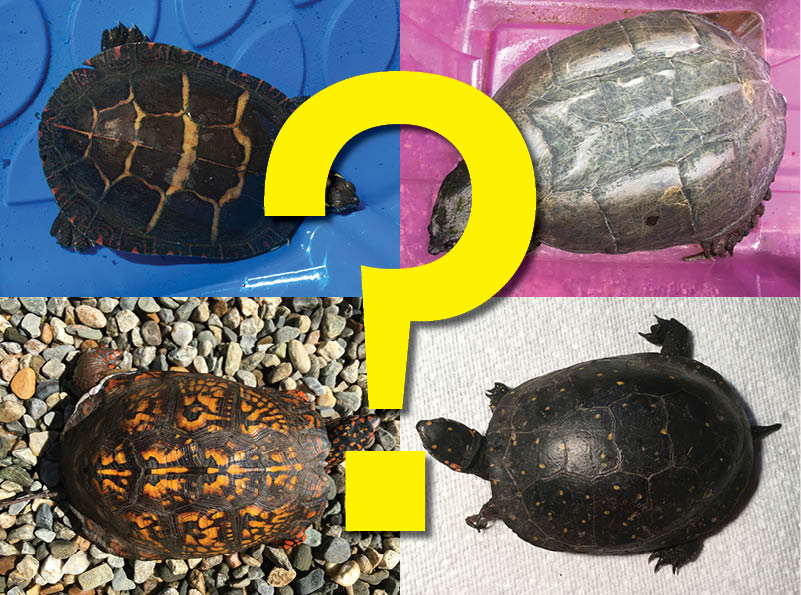Found an injured turtle? The first question to answer is: what kind? One of the most surprising aspects of turtle rehab is the constant realization that most people have no idea how to tell one kind of turtle from another. Yet this is a critical piece of information in being able to determine what happens next.
Think of it this way. No one calls a rehabilitator and says “I found an injured rodent.” They say I found a squirrel, or a woodchuck, or a chipmunk or a mouse. Most people are able to identify these species, and that makes the job of helping these animals—and their finders—much easier, because the rehabber can assess the situation immediately and plan accordingly. Think about it: the ramifications of taking in an injured chipmunk are considerably different than they are for an injured beaver or porcupine. One is small and common and won’t require much in the way of resources, one is large and aquatic, and one is large and potentially dangerous. Their diets, habitat needs and behaviors are completely different, and that means their treatment plans need to be completely different. Before even deciding whether to accept that animal, a rehabber must assess his or her level of skill, experience with that specific species, and capacity in terms of space, supplies and infrastructure to adequately handle that animal for as long as it will take for it to recover. And that assessment begins the minute they pick up the phone to respond to a call.
Turtles are no different. Just as saying “I found a bird” means little until you know whether it’s an eagle or a sparrow, calling about a turtle requires more information up front. The differences between even the two most commonly found species, snapping turtles and painted turtles, are vast. One may be huge, the other is small. One is able to recover from injuries the other cannot. One can be dangerous to handle, the other not (although painteds can be more aggressive than snappers!). One carries 7-9 eggs, the other 20-40. If the animal is one of the five other listed species of turtle we have in Connecticut, the stakes are higher and the animal often more specialized in its needs; does the rehabber have the knowledge, qualifications and experience necessary to handle the rarer specimen? On the flip side, the turtle could be a non-native, problem species like a red-eared slider—an animal that should be permanently removed from the wild if found and not allowed to reproduce. This introduces a whole new set of considerations, such as whether to accept that turtle for treatment at all, try to rehome or euthanize. Egg incubation is definitely a moot point, but without first knowing that the victim is a slider, real time may be spent discussing how to save those eggs.
Time is the most precious commodity of both wildlife in crisis and their rehabilitators during the busy season. Taking a moment to identify your turtle before you call is one of the best ways you can help conserve that resource. It’s a short list—only eight!—and it will be a huge help to all involved. For a quick reference, check out our Species ID page.


